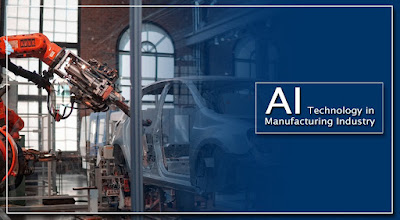There’s no doubt that artificial intelligence has revolutionized the
way we operate. From healthcare to advertising to your Netflix
recommendations, AI directly enhances our day to day lives by providing a
fast, efficient, and customized experience. AI technology has become
more developed and advanced, leading to lower costs and making the
technology more accessible across various industries. This shift has
made a massive impact in the way that products are manufactured and has
led to more efficiency, less human error, and greater output overall.
This popularity is driven by the fact that manufacturing data is a good fit for AI/machine learning. Manufacturing is full of analytical data which is easier for machines to analyze. Hundreds of variables impact the production process and while these are very hard to analyze for humans, machine learning models can easily predict the impact of individual variables in such complex situations. In other industries involving language or emotions, machines are still operating at below human capabilities, slowing down their adoption. Let’s explore the role of artificial intelligence in manufacturing.
Generative Design- AI technology in robotics allows
us to achieve collaboration between human minds and bot technical
capabilities. Generative design demonstrates this principle by receiving
human inputs that tell the machine the input elements, specifications,
tolerances, etc., that are then considered in building a complex
algorithm. Using this algorithm, artificial intelligence runs
simulations of all possible combinations of the design inputs to create
the optimum product design.
Preventative Maintenance-
Many industries use artificial intelligence to predict when mechanical
parts may require replacing. Machine learning combined with historical
data creates an algorithm that identifies potential problems before they
arise, allowing operational employees to take the necessary measures to
prevent issues that may slow or even halt production.
Predictive Forecasting-
AI algorithms can help manage all elements of the supply chain to
prepare for market shifts that may otherwise hurt production and
distribution. Anticipating these market fluctuations allows businesses
to become extremely resilient and focus time and resources to the most
critical points, adopting a proactive versus reactive strategy.
Digital Twins-
A digital twin is a virtual representation of a factory, product, or
service. The representation matches the physical attributes of its
real-world counterpart through the use of sensors, cameras, and other
data collection methods. To make digital twins work, the first thing you
have to do is integrating smart components that gather data about the
real-time condition, status or position with physical items. The
components are connected to a cloud-based system that received all the
data and processes it.




0 Comments